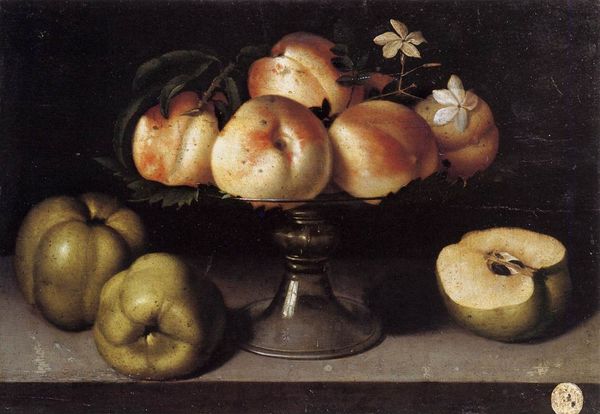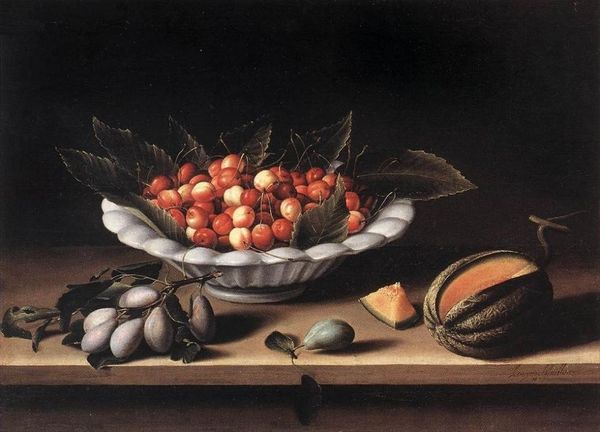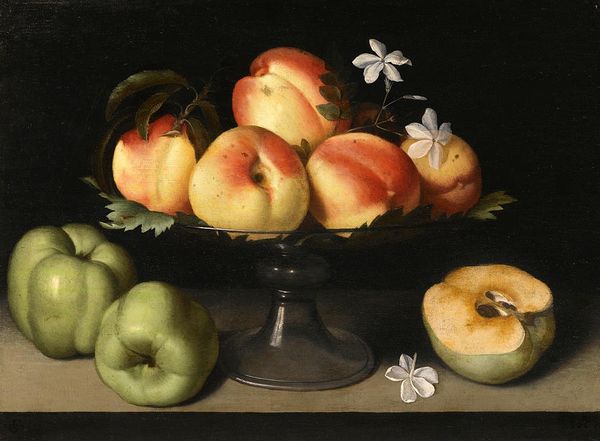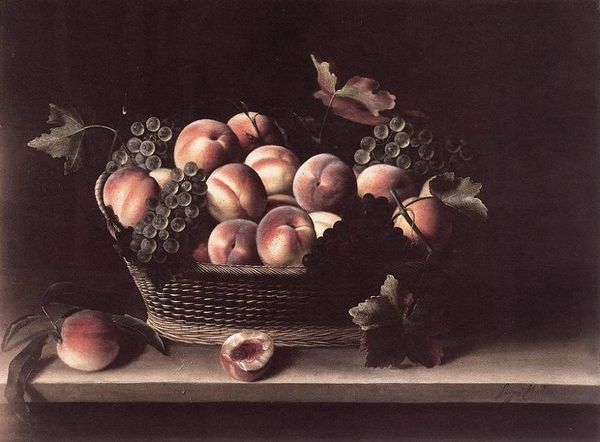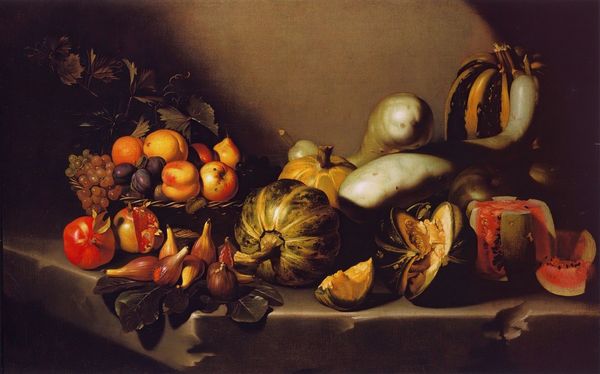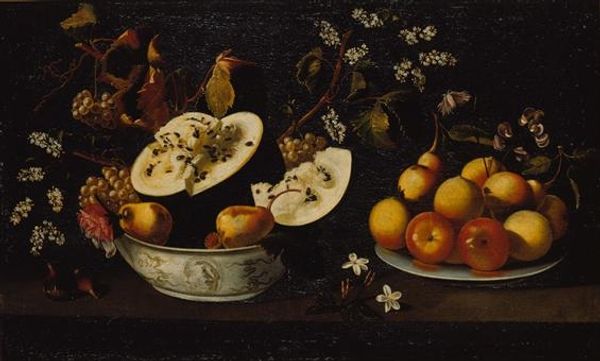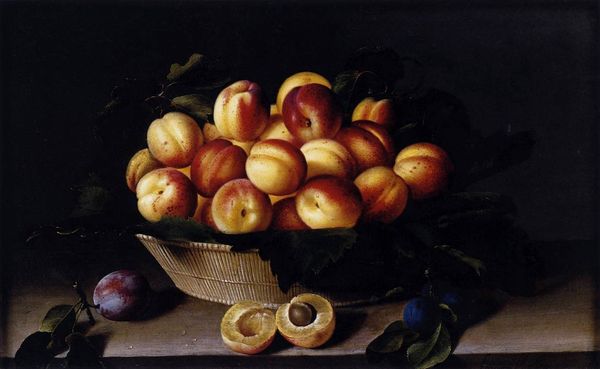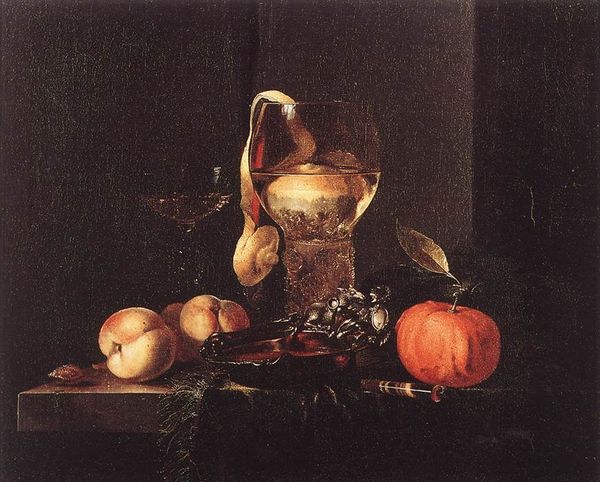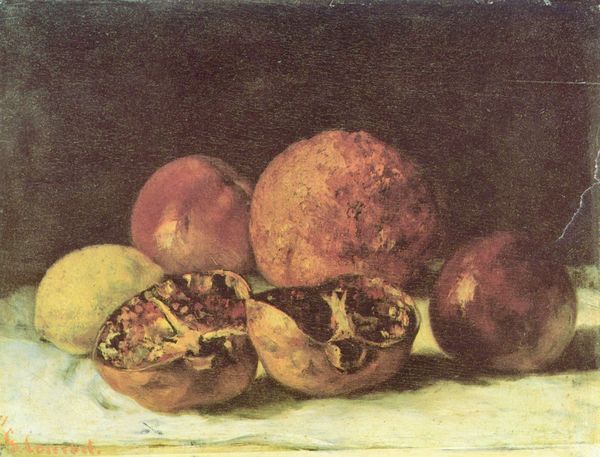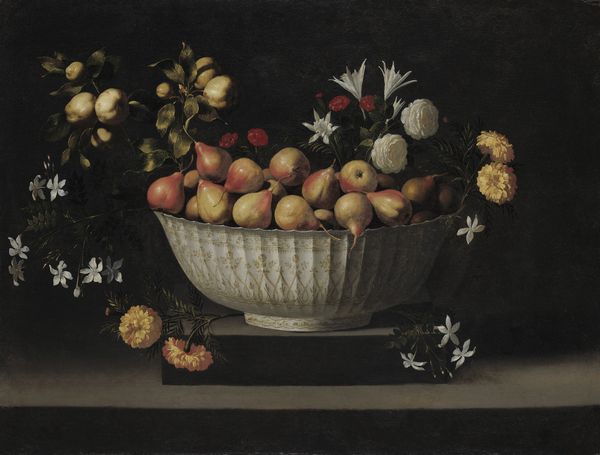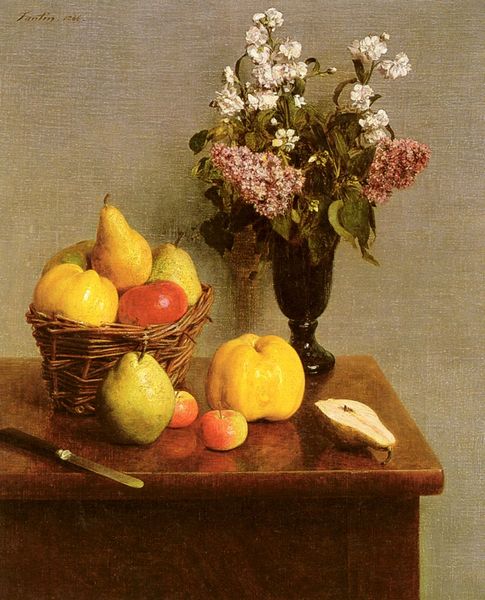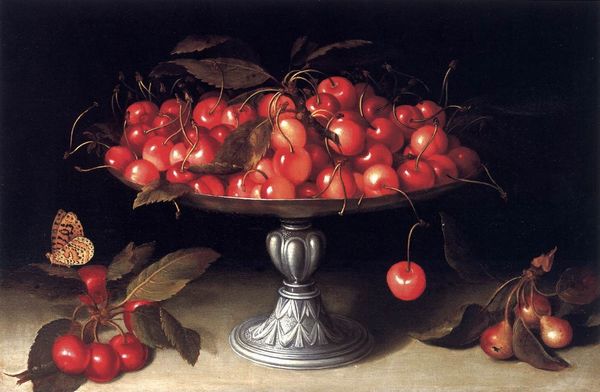
painting, oil-paint, photography
#
food
#
baroque
#
painting
#
oil-paint
#
photography
#
oil painting
#
italian-renaissance
#
realism
Copyright: Public domain
Curator: At first glance, this is a rather somber arrangement, wouldn't you agree? It's beautifully rendered, of course, but the dark backdrop and muted palette give it a contemplative mood. Editor: Indeed. It is an early still life, created around 1610 by Fede Galizia. She's considered one of the pioneers of the genre, particularly notable for her meticulous attention to detail. She has masterfully captured the varying textures and light. The soft blush on the peaches versus the rougher skin of the quince, and look at the glistening of the leaves. Curator: The items feel weighted with significance, don't they? In many cultures, fruit symbolizes abundance, fertility, and the cycle of life. The fading bloom, perhaps an allegory to life’s fleetingness, and the insect lurking on the lower right of the painting also feels symbolic; a symbol of transience, decay even. The stark background throws it all into sharper relief. It's more than just fruit, wouldn't you agree? Editor: Absolutely, and consider how the arrangement itself reinforces these concepts. Galizia's structural sophistication in composition—the interplay between fullness and emptiness, roundness and angularity, directs the eye according to sophisticated geometries and creates depth through layered lighting. Curator: And what about the choice of including jasmine? Symbolically, jasmine suggests sensuality and the promise of fulfillment, juxtaposing mortality, suggesting that earthly delight coexists. Does this suggest a duality, something to contrast with, maybe, the somberness, the contemplation? It creates quite a poignant interplay. Editor: It most certainly does. The single bloom lends fragility as an element, visually and conceptually breaking down what would be an exercise of volumes otherwise, in which it also acts as a compositional technique of balance, counterbalancing, that is, the heavier section of the work dominated by quinces and peaches in the upper half. Curator: The dark ground also makes this work a reflection on how to render these objects—each one seemingly lit from within, to create volume and evoke deep symbolic associations. It’s a composition ripe with possible readings! Editor: Quite. Seeing how Galizia used line, color, light, texture, and shape is in itself so instructive about how to convey not just physical resemblance, but also something more profoundly resonant with visual components. Curator: Studying her paintings through a cultural lens teaches us how the careful use of selected visual cues can elicit thoughts on both timeless subjects like transience and very tangible sensations such as taste and smell. Editor: Seeing how the various shapes of volumes interrelate and define the whole helps one notice that there’s an elegance that surpasses even cultural considerations, achieving harmony within a balanced and sophisticated visual narrative.
Comments
No comments
Be the first to comment and join the conversation on the ultimate creative platform.
